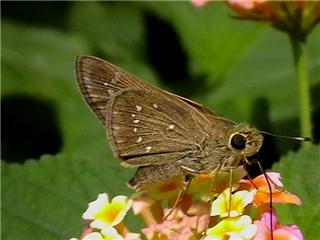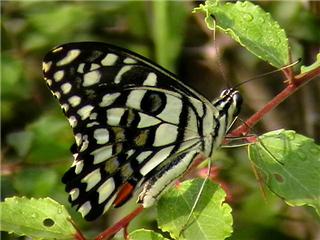Conservation of Butterflies Part III
Butterflies of Delhi
-Dr.S.P. Surya Prakash
Despite being India’s most polluted city with a vehicular pollution of around 53 lakhs vehicles, Delhi is home to around 80 butterflies and almost
every species of butterfly can be seen in the 1000 acre beautiful campus of Jawaharlal Nehru University, New Delhi because it has all native grasses , native trees and shrubs
they all serve as a species –specific host plant within campus, I have already started an awareness programme among students from Life Sciences and Environmental sciences about
Birds ,Butterflies ,Reptiles and other wild animals of JNU campus and results are encouraging I am getting all support from
JNU authorities and students for
the work I am on the way to prepare a “Pictorial data Bank of the butterflies of JNU” which may help all other butterfly lovers of Delhi.
 Similar programmes like butterfly walk, breakfast with butterfly etc are run at Asola Bhatti Wild Life Sanctury,
under Sajeeve,T.K., BNHS’s Education officer, at Aravali Biodiversity Park, by Dr. M.Shah Hussain under CMDE programme of Delhi University, and at Yamuna Bidiversity Park by Dr. Faiyaz.
Okhla Bird Park is home to many butterflies at the bank of river Yamuna.
These places are the other main hot spots of butterfly diversity in New Delhi..
Similar programmes like butterfly walk, breakfast with butterfly etc are run at Asola Bhatti Wild Life Sanctury,
under Sajeeve,T.K., BNHS’s Education officer, at Aravali Biodiversity Park, by Dr. M.Shah Hussain under CMDE programme of Delhi University, and at Yamuna Bidiversity Park by Dr. Faiyaz.
Okhla Bird Park is home to many butterflies at the bank of river Yamuna.
These places are the other main hot spots of butterfly diversity in New Delhi..
THREAT TO BUTTERFLIES
Nilgiri Biosphere Reserve
(NBR) has listed 41 butterflies as protected under wild life protection act 1972. The list includes
8 species under schedule I, 26 species in
schedule II and 7 species in schedule IV.
300 species have already included in red data book as endangered species, which is very alarming
(The Tribune).
Recently three French people came to Sikkim on student visa and started collecting butterflies and moths along with other insects; vigilant ‘butterfly
India’ activists spotted them and they were nabbed by police and released after a fine of just Rs. 25000 each.
Large-scale poaching and international nexus of smugglers is the biggest threat to Himalayan butterflies like Apollo and Swallowtail butterflies
which are most threatened species. Smugglers engage locals specially children in Arunachal Pradesh, Kerala, Rohtang Pass, Assam and W.Ghats and pay them 30 –50 rupees for every butterfly they catch for them. Depending upon the species these are sold in the
international market, some times for even as high as 2500—3500 dollars. China and South East Asia along with Thailand are the main hubs of international butterfly smuggling from India. Poachers come to India on
student visas and they collect rare butterflies carry them in envelops , matchboxes and use many more criminal methods for their transportation and not only that they throw away all those beautiful butterflies whose wings are damaged during catch and
this number may even touch to thousand some times.
Lack of expertise in the identification of butterflies poached help poachers to have an easy escape; there are many reported incidences where international
smugglers were released from police custody due to lack of information on identification.
These Lepidoptera are killed, dried and used for greeting cards, and for other ornamental and decoration purposes.

ACTION PLANS FOR PROTECTION OF BUTTERFLIES
1-
Habitat destruction of forest cover especially for species –specific host plants should be reviewed time to time.
2
- Increased vigilance on poaching of butterflies from the areas where they are found in abundance.
3-
Educate school children from primary level by introducing butterfly chapters in science books about their importance in various fields related to human life.
4 – Recognise and reward those experts who are already engaged
in butterfly conservation programmes and are working on their own as
field guides in their area locally.
5 - Sponsored symposia and seminars in every academic institute
for updating information on butterfly status in the country should be encouraged through government funding.
6 - Farmers in villages should be educated about butterfly’s importance as a pollinator in agriculture.
7 - A data bank at national level should be created where information
related to butterflies and their conservation is maintained with all details including regional nomenclature of all butterflies.
8 - Academic institutions should discourage students for submitting
annual projects on butterfly collection and their albums.
9 –
Discourage use of over dose of pesticides in crop fields and avoid overgrazing .They kill eggs,and larvae of butterflies.
10 –
Farmers
should be made aware about crop rotation and monoculture plantation should be reduced. A study conducted in Assam Tea Estates shows that butterfly density was low in tea gardens
because of monoculture as compared to other green forests.
Dr. Surya Prakash
Member
(‘BNHS’, ‘Butterfly India’, ‘Delhi Bird’)
Room # 214 , C.C.I.F.
School of Life Sciences
Jawaharlal Nehru University
(Photographs of Commonriceswift and limebutterfly by Dr.Surya Prakash)